The new Honda Jazz Sport Hybrid is currently the title bearer of Malaysia’s cheapest hybrid vehicle. Priced at RM84,880 on-the-road without insurance, Honda Malaysia (HM) opened the floodgates to a whole new pool of individuals who are eager to embrace electrified motoring. However, while excitement brewed, the company remains cautiously optimistic with a monthly sales target of 150 units (250 units for the City Hybrid), and that’s for the whole of Malaysia, mind you.
Hotshot critics with business insights will have you believe that it’s a pessimistic target, but it’s in many ways a calculated measure of acquainting hybrid technology to those who are genuinely interested. Plus, it could well lay the foundations for future hybrid models to come – not too dissimilar a strategy from the Civic turbo’s introduction prior to the CR-V – considering the increasing variety of electrified vehicles within the automaker’s portfolio.
Just a few months ago, HM announced that both hybrid models received a collective booking of 1,200 units, with the City accounting for 61% of said figure. That’s to be expected in a sedan-loving market (also, we’ve exhaustively reviewed the City Hybrid), so what else does the Jazz Hybrid have going for besides being cheaper than its booted twin?
Well, let’s see. In terms of powertrain, the two share the same naturally-aspirated 1.5 litre DOHC Atkinson-cycle four-cylinder unit (electronic fuel injection, PGM-FI) producing 110 PS and 134 Nm of torque. Atkinson-cycle engines are typically more fuel efficient, hence the lower output. Unlike the previous-generation Jazz IMA’s 1.3 litre i-DSI engine, this requires just four spark plugs (one plug per cylinder) instead of eight, so you’ll no longer face a near RM1,000 bill for a replacement set.
The output figures are lower compared to the regular version’s 1.5 litre SOHC engine (120 PS, 145 Nm), but thanks to a 22 kW (29 hp and 160 Nm) electric motor, its total system output stands at 137 PS and 170 Nm of torque. This makes the Jazz Hybrid one of the most powerful cars in its class (Honda claims it’s a match for a 1.8 litre motor), losing only to the Renault Clio GT Line’s 1.2 litre turbo-four which makes 120 PS and 190 Nm of torque. Close behind is the Ford Fiesta Sport+ 1.0 EcoBoost with 125 PS and 170 Nm.
The Jazz Hybrid’s nearest rival, the Ioniq Hybrid, draws power from a 1.6 litre direct injection engine (105 PS, 147 Nm) that’s married to a more powerful 44 PS/170 Nm electric motor, giving a combined output of 141 PS and 265 Nm of torque, although the cheapest Ioniq costs almost RM16,000 more and competes in the less competitive C-segment category.
The Jazz’s electric motor is the same patented high-tech stuff as the City Hybrid’s, and it’s made completely without toxic rare earth metals. Now, the i-DCD motor puts out nearly twice the torque compared to the Jazz IMA’s – which made just 10 kW and 78 Nm – and is only 13 mm thicker and weighs two kg more (16 kg). It’s built directly into the new seven-speed dry dual-clutch transmission (previously a CVT) and permanently attached to the first gear, driving the front wheels.
A new and larger 0.86 kWh lithium-ion battery (which costs RM5,513 to replace, if necessary) is tasked with juicing the motor, but overall dimensions are smaller and it weighs less than the 0.58 kWh nickel-metal hydride in the IMA. Li-ion batteries are made of carbon and very reactive lithium, making them denser storage units compared to the heftier nickel and metal construction of Ni-MH batteries. It also benefits from quicker charge and discharge rates.
The battery pack is stored under the boot floor just aft of the rear seats and, despite the smaller packaging, boot volume is still slightly compromised – down 49 litres, now rated at 314 litres. When fully charged, the battery gives between one to two km of pure electric range, and it also functions as a power unit to keep the electric compressor and electric water pump running. The former, which costs RM4,192.40 (inclusive of GST) to replace should it fail, ensures that cold air will always be available even when the engine is turned off, something the Jazz IMA sorely lacked.
The whole i-DCD system adds about 77 kg to the car’s weight (1,158 kg – it’s based on the Jazz E which weighs 1,081 kg), so managing the extra heft calls for minor tweaks to be made to the suspension. Upgrades here aren’t as extensive as the City Hybrid’s; the front and rear shocks are standard but have been stiffened with new coil springs, and between the rear axle sits a new performance rod to keep suspension movements in check.
The revised suspension translates to a slight improvement in the ride and handling department – the Jazz Hybrid can now handle spirited driving more competently, but all-out sporty driving is still better experienced with the City Hybrid. Both models, however, get a quicker steering rack (14.7 vs 16.7 ratio) for enhanced steering response, although a slight increase in twitchiness can be experienced at higher speeds.
Like the Jazz S and E, the Jazz Hybrid rides on smaller 15-inch wheels with higher profile (175/65) tyres, the combination of which lends a hand to a pretty decent ride quality. It’s nearly indistinguishable from the standard Jazz too, soaking up road undulations more delicately than the City Hybrid, which rides on 16-inch wheels and stiffer dampers.
Granted, it may not be as athletic and sporty to drive, but if comfort ranks high on your list of priorities, then the Jazz becomes a fierce contender for your money. Another pleasant observation is the improved insulation and NVH levels (especially tyre roar), a trait that was once alien to Honda cars some years back, at least in this part of the world.
In terms of engine and transmission mapping, the pair is identical. It starts off in utter quietness followed by audible beeps before you’re allowed to glide off in silence. Feathering the throttle permits driving in pure electric of speeds up to 60 km/h, above which the engine springs to life in a seamless fashion to assume primary propulsion duty.
With 137 PS and 170 Nm at its disposal, there’s really enough power for virtually all urban driving conditions. Junction exits are primarily assisted by the electric motor’s instantaneous torque, helpful especially when navigating through moderately paced, traffic-heavy roads.
There are three drive modes to choose from: Eco, Normal and Sport. The first two function very similarly, prioritising fuel conservation by going into full electric mode as often as it possibly can. Honda says the Jazz consumes just 3.9 litres of fuel per 100 km (or 25 km per litre), and a short 50+ km fuel economy test over mixed roads in Kuala Terengganu (which yielded 3.01 l/100 km, or 33.2 km per litre!) substantiates that very claim. Replicating that reading can be fairly challenging but by no means impossible once you’ve gotten accustomed to the hybrid drive system.
In “S” or Sports mode, the i-DCD system goes into full attack, priming the engine, transmission and throttle response to its most aggressive state. It also allows the engine to rev harder and longer, giving you every ounce of power the engine and e-motor can muster. Paired to this is a close-ratio seven-speed (dry) dual-clutch transmission that’s unique only to the hybrids, hence the name i-DCD, short for intelligent dual-clutch drive.
This is a welcoming change to the usual continuously variable transmission that equips most Hondas on sale in Malaysia today, in that it provides actual gearshifts that tempt drivers in ways a stepless transmission simply can’t. It has also been vigorously tested by Honda engineers – Malaysian and JDM models now share the same beefed-up hardware and tuning.
The downside here is the lack of paddle shifters (reserved only for the top Jazz V model), detracting the car from yet another feature that should’ve been included (it’s called the Sport Hybrid for good reason, right?). It’s not the snappiest DCT either, so as long as you don’t expect DSG levels of gearshifts, this one should prove satisfactory. For the occasional drive up to Genting Highlands, the best bet is to just leave it in Sports mode while ascending, and flick the electronic gear shifter (another hybrid-only item) into “L” mode for the descent trip.
New and unique to this Jazz Hybrid is an electric servo brake mechanism (also shared with the City) that improves on two key things: energy regeneration and brake feel. The typical mushiness – more commonly described as a disconnect – that plagues normal hybrid cars, even the premium ones that cost nearly 10 times more than the Jazz Hybrid, is almost completely non-existent. You almost don’t realise that it’s there until you hear the faint noise coming from the servomotor each time the brake pedal is depressed.
As for equipment, the Jazz Hybrid mirrors that of the mid-level Jazz E (RM78,540), receiving items such as keyless entry and start, halogen reflector headlights and LED daytime running lights that’s built into the lower front bumper, where the fog lamps are usually located.
On the outside, everything dittos the Jazz E, with key visuals indicating its greener intentions materialising in the form of hybrid badges on the front fenders and tailgate. The Jazz V remains the only model in the range to get dual-tone 16-inch wheels and signal indicators built into the wing mirrors, while the rest makes do with 15-inch wheels and the old fashioned on-fender indicators. All versions of the Jazz get a stick-type radio antenna (I’m sure it looks better without), versus the City’s shark fin type.
It’s the same story on the inside as well, except the hybrid gets a new electronic gear shifter, passive cruise control and a special instrument cluster. The entire instrumentation has been redesigned, and at the centre of it is a large speedometer that’s complemented by two multi-coloured digital displays on each side.
The left screen permanently displays the e-motor’s charge and discharge levels in real-time, as well as the current gear engaged, time and external temperature. The right screen on the other hand, provides all driving data such as trip meter, rev counter, fuel gauge and real-time reading of the hybrid drive system. All this is interchangeable through a set of three switches at the five o’clock position of the steering wheel.
As for the steering wheel itself, it’s multifunctional and includes the new cruise control switches, but the rim is too thin for my liking and is made of polyurethane (only the V gets a leather wrap), which cheapens feel right from the get-go. It also loses out on the V’s soft-touch pads on the passenger side. Just below the driver-side air-con vent is a nifty cup holder that’s unique to the model, as is the centre tunnel that features two extra cubbies and a sizeable bin. Overall, it’s a more practical space than the City – the rest of it is the same as the sedan, except the touchscreen head unit is larger at seven-inch and comes with reverse camera and six speakers.
Another appealing trait of the Jazz is it retains the praiseworthy Ultra seats which, despite eating into the boot space, still features all the folding configurations as the standard Jazz. With the seats folded down, the Jazz swallows up to 835 litres of cargo (-46 litres from the petrol-only Jazz) – more than enough for the average grocery haul, but may pose a problem on the airport run when you have more than two passengers with a 25 litre luggage each.
Like the Jazz IMA, the space saver spare wheel gets replaced with a temporary tyre repair kit. It’s a tad more convenient to fix a flat – now you don’t have to sweat buckets from swapping tyres – all by yourself, but the tyre sealant only works for punctures no larger than four mm. If it’s any bigger or the side wall gets ruptured, then you’re as good as stranded.
When it comes to maintenance, Honda says there is no hybrid-specific servicing required, which means maintenance costs is identical to the rest of the Jazz range, with a service interval of 10,000 km. The company is also giving a separate eight-year/unlimited mileage warranty for the lithium-ion battery pack for extra peace of mind, and it comes on top of the car’s five-year/unlimited mileage warranty coverage. There’s also the regular 12V starter battery that’s used for low-power electronics, and it is exactly the same as the petrol variants, costing no more than RM200 to replace.
As for safety, the Jazz Hybrid is equipped with the usual anti-lock braking system with electronic brake-force distribution, vehicle stability control, dual Isofix anchors and four airbags (again only the V gets six). Like the City Hybrid, the Jazz also scores five stars in the ASEAN NCAP crash safety test.
After all has been said and done, the City Hybrid, for what it’s worth, clearly fits the bill of being the more value-for-money choice, especially when it’s only RM4,320 more (very small difference over a long loan period). But for city dwellers who spend the better part of their time driving in tight urban roads, the Jazz Hybrid, being nearly 500 mm shorter in length (3,955 mm vs the City’s 4,442 mm), becomes the more suitable and sensible candidate.
At the end of the day, it’s a tussle between need and want. The Jazz Hybrid is perfect for those seeking maximum practicality and fuel efficiency, whereas the City Hybrid is a no-brainer option if sporty driving is of the person’s foremost preference. Whichever you gravitate towards, you won’t go wrong with either.
Choosing between the hybrid pair and their petrol-only variants, however, is more complicated. On one hand, we now have the two most affordable hybrid vehicles in Malaysia, but on the other, they are less well equipped compared to the top V versions of both models, for around the same prices. Having V-specced hybrid variants would be ideal of course, but would customers be willing to spend more for a tax-free hybrid?
It’s obvious that Honda Malaysia has settled on a small compromise here – E-spec hybrids at V prices. As far as the powertrain is concerned, the hybrid is far more capable than the standard petrol, but you do have to pay a little extra for it and accept the slightly pared-down equipment list. What do you think – would you go down the hybrid route at all, and if yes, which of the two models would you prefer?
Looking to sell your car? Sell it with Carro.

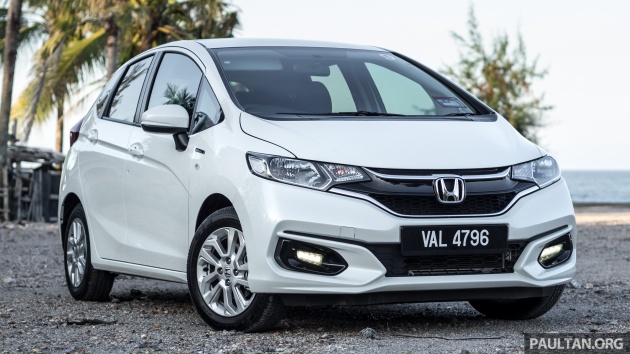

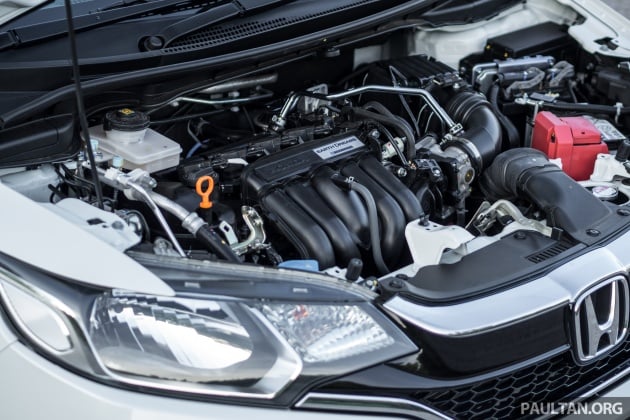






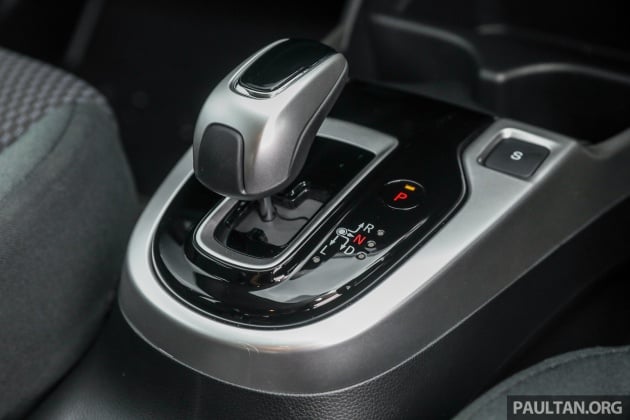





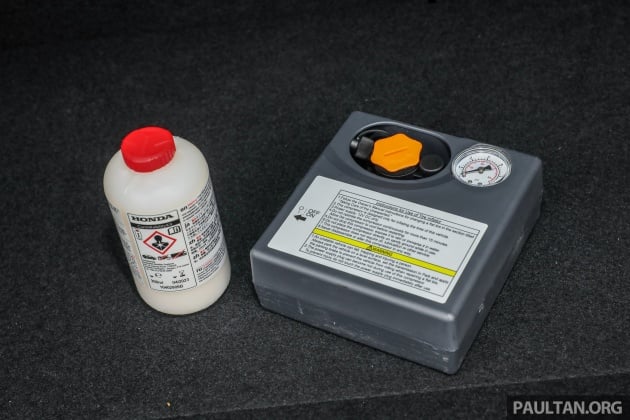


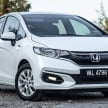
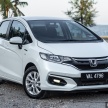
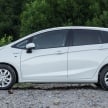
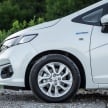
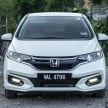
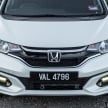
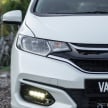
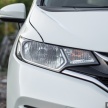
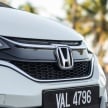

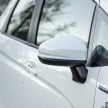
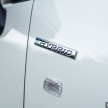
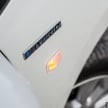
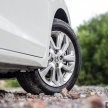
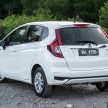
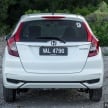


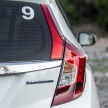
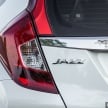
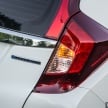
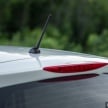
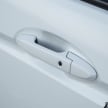
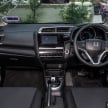
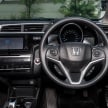
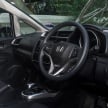
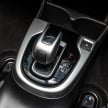
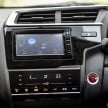
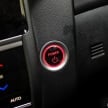
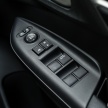
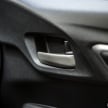
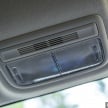
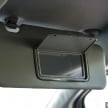

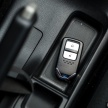
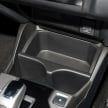
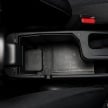
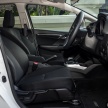
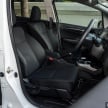
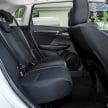
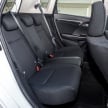
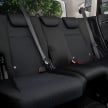
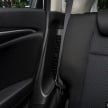
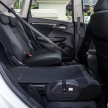
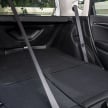
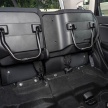
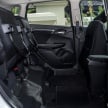
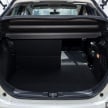
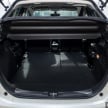
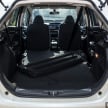
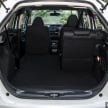
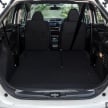
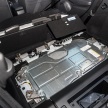
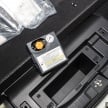
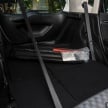
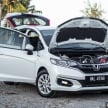
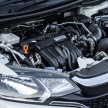
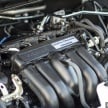
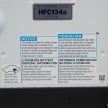
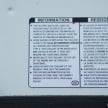
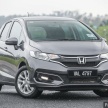
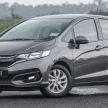

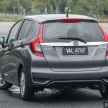
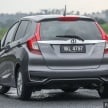
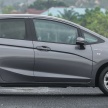

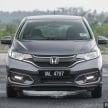
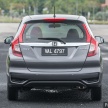
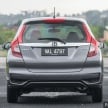
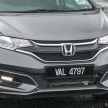
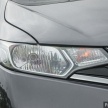
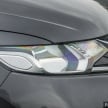
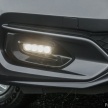
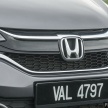

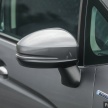
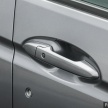
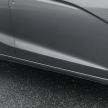
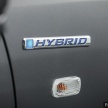
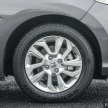
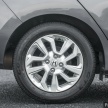
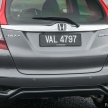
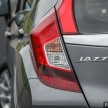
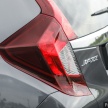
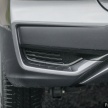
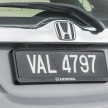

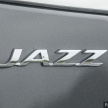
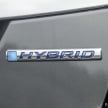
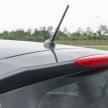
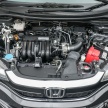
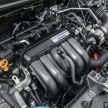

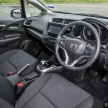
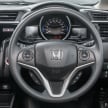
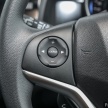
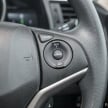
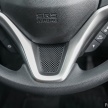
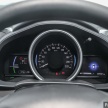
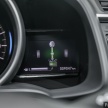
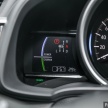
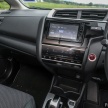
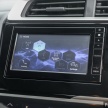
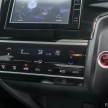
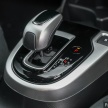
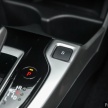
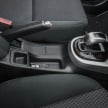
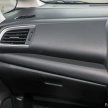
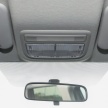
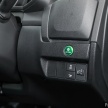
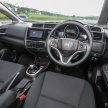
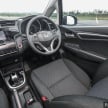
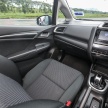
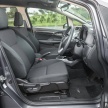
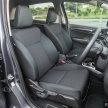
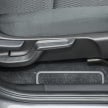
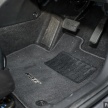

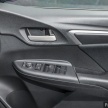
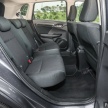
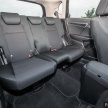
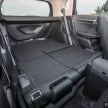
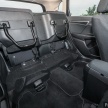
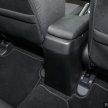


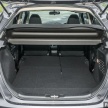
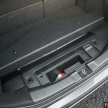



















Pretty sporty Jazz 0-100 in 7.7secs. Faster than civic 1.5t.
DSG vs CVT
Are u sure? i can challenge you for a drag race with my FC turbo and smoke u easily.
(Like) Myvi 1.5 Advance 55k.
(Dislike) Jazz 1.5V 85k
Your CVT sucks big time, my dct much better
When compared with ioniq at 16k more but has more power, packs with more technologies and in a bigger class. It rivals the prius and at 100k price…its a bargain compares with prius and jazz.
The new Honda Jazz Sport Hybrid is currently the title bearer of Malaysia’s cheapest hybrid vehicle – No question on the title part but cheapest is subjective here.
At RM85k, only those in the M40 bracket can afford. Its time our P1/P2 make something affordable/viable for our poorer cousins. What say U P1/P2 !!
Myvi? Other than the hybrid system and 7 spd DCT, safety spec wise the myvi is better than Jazz hybrid. Myvi also have LED headlamps and auto folding mirror… yes the Jazz doesn’t even have auto folding mirrors, only the V grade gets it
No need P1 P2 join in hybrid race. Just focus in eev, keep the price low by avoiding the expansive hybrid part. That what my pipu need from national car maker at least for now. Cheap to run, easy to maintain. Lets the big player with their hybrid.
RV conscious Boleh-Landers still hesitant to buy hybrid.
But in a decade or so, majority of vehicles sold will be some form of hybrid or pure electric. So, even if you are hesitant to buy now, by 2027 you’ll be owning one.
Save $30K, the topspec Myvi a much better proposition.
As a hybrid car owner in malaysia, i would strongly suggest you stay away from hybrid, unless you have LOTS of money to pay for the spare parts, not the battery, but the other stuffs like inverter, drive by wire brake system , electric compressor and sensors…… not to say hybrid got no 2nd hand value.
Owned A6 hybrid. Say No to hybrids..
Owned 2 Toyota hybrids. Say YES to hybrids (except IMA.)
Your hybrid is not a mainstream model like the Jazz/City Hybrid here.
Your experience may not apply in this case.
Dear Matthew H Tong,
“Overall, it’s a more practical space than the City – the rest of it is the same as the sedan, except the touchscreen head unit is larger at seven-inch and comes with reverse camera and six speakers.”
FYI – City Hybrid and Jazz Hybrid does come with the lousiest touch screen of all time (FL Jazz/City Owners) would agree. It comes with the lousiest reverse camera as well.
I believe you would need to correct that statement as above.
I gave you a thumbs down….. I own Hondas and never have i face any problems with the touch screen.
you must have gotten your touch screen from some accessories shop that install low quality units and you are here to blame honda to cover up.
Have you owned a FL Honda City/Jazz (2017) ? If so , have you tested the headunit.
It can’t even display Chinese characters which is a complete joke
Ben Yap , FYI – I am using stock HU
Jepunis cars got cheapo HU.
Msian car prices are incredibly high! Why is that? Shouldn’t it be priced affordably for the masses ?
Then why every year theres record breaking sales and record breaking epic traffic jams daily?
We must be so poor that more and more cars r non-nationals as each year goes by, huh?
Because we have poor public transport and its non-existent in some states. In Malaysia no car means u cant even go to work.
Yeah, but this excuse dun jive with increasing % of non-nationals every year.
no/low down payment + loan is so easy nowadays
Hideous car with very poor built quality. Even the previous generation Myvi, Jazz GE and current little cute Picanto has far superior built quality than this garbage Jazz model.
Very outdated model. Honda Malaysia should kill it off instantly. No Jazz RS model like other countries and cheapskate parts used throughout this GK model. Better wait for next generation model.
Yes, totally true. Stupid Jazz GK model and very ugly inside out. I cancelled my booking recently after comparing it to its rivals like Mazda 2, Ford Fiesta, Kia Rio. All 3 of them were far greater to drive and have overall better features especially Mazda 2 with the best built quality compared to this lousy Jazz GK5.
Most Malaysians are completely blinded by Honda’s brand image only without testing their cars quality first.
Hyundai Ioniq. Nuff said
honda Hybrids our ultimate answer to fight ever expensive weekly petrol prices.
Don’t understand why we don’t get shark fin antenna…
Interested in the Jazz hybrid but Honda should have made a higher spec available. Should be V spec or better. Remember hybrid buyers are usually early adopters and/ot tech savvy people that can accept slightly higher price for a better specification.
Clutch again? Oh man, just go around and ask those City 03-08 owners. Clutch CVT and now facing thousands ringgit bill to replace the clutch pack. Mom was trying to sell it and was shocked to know that her 08 City VTEC full spec sells for a lot less than a 09 Vios Auto J specs.
Wonder how your mom drive… Honda cvt clutch is wet type should last very very very long before need to change beside the clutch is a stop clutch only…
But… this generation of Honda DCT is “dry”… much like the infamous VW…”dry”…
and their so call vigorous testing was only a few thousand KM… not a few hundred thousand KM.
The first 2 generations of CVT for Jazz and City were problematic . Latest ones I am not sure but I am not risking it. I just bought a Toyota which is very poorly equipped for the price. Honda gives you more for the price but because of my bad experience with Honda CVT, I am not buying another Honda with CVT just yet…
Even Toyota already announce by 2020 all Toyota cars will be hybrid.. looks like hyrbid going mainstream..
Pls take a lot for the model jazzz n honda city hybrid. I notice all got ŕusty issue near by the engine area.
Please be carefully that honda hybrid n jazz got rusty issue near by engine area